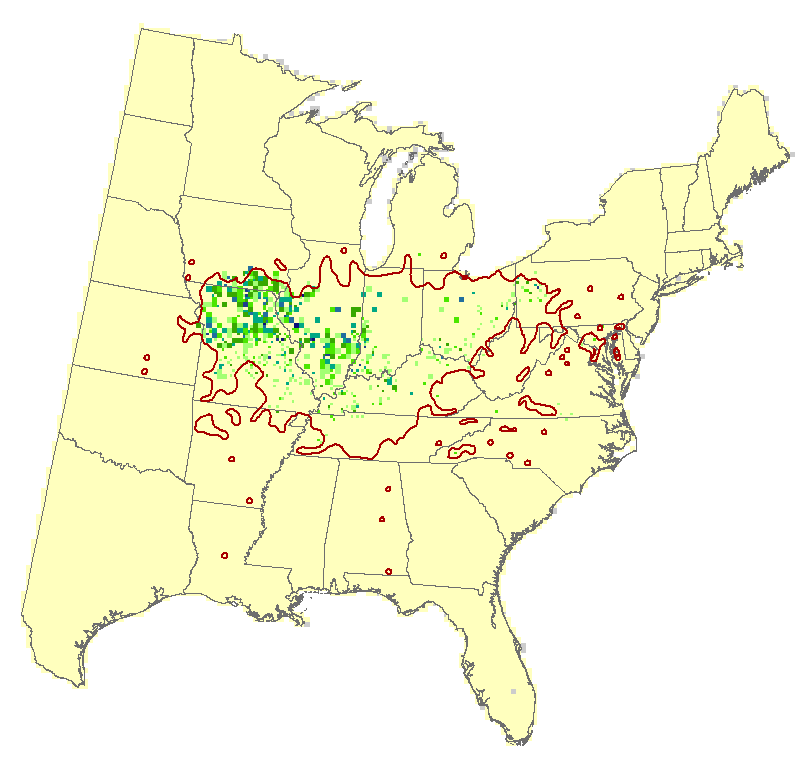shingle oak (Quercus imbricaria)
Model Reliability: Medium
| GCM SCENARIO | % Area Occ | Ave IV | Sum IV | Future/Current IV |
|---|---|---|---|---|
| Actual | 2 | 7.3 | 4356 | N/A |
| RFimp | 2.7 | 3.9 | 3096 | 0.71 |
| CCSM45 | 3.1 | 2.4 | 2219 | 0.72 |
| CCSM85 | 3.1 | 2.2 | 2043 | 0.66 |
| GFDL45 | 4.6 | 2.2 | 3001 | 0.97 |
| GFDL85 | 4.4 | 2.2 | 2871 | 0.93 |
| HAD45 | 3.9 | 2.3 | 2641 | 0.85 |
| HAD85 | 3.1 | 2 | 1828 | 0.59 |
| GCM45 | 4.9 | 1.8 | 2620 | 0.85 |
| GCM85 | 4.5 | 1.7 | 2248 | 0.73 |
Regional Summary Tree Tables
Summaries for tree species are available for a variety of geographies, in both PDF and Excel format. These summaries are based on Version 4 of the Climate Change Tree Atlas
Interpretation Guide
Shingle oak is a narrowly distributed (2.9% of area), but dense and of high IV where it is located in the central portion of the study region (especially Missouri and Illinois), and the medium reliable model suggests a small decrease in suitable habitat within its current range. As such, it is the only oak with models suggesting a reduction in suitable habitat. It has an adaptability rating of medium with an overall rating of poor capability to cope with the changing climate. SHIFT shows some infilling.
Family: Fagaceae
Guild: persistent, large-seeded, advance growth dependent
Functional Lifeform: medium sized deciduous tree
| 4.9 | 1.31 |
| -0.74 |  |
MODFACs
What traits will impact shingle oak's ability to adapt to climate change, and in what way?:
Primary Positive Traits
Environment habitat specificity
Primary Negative Traits
Shade tolerance



